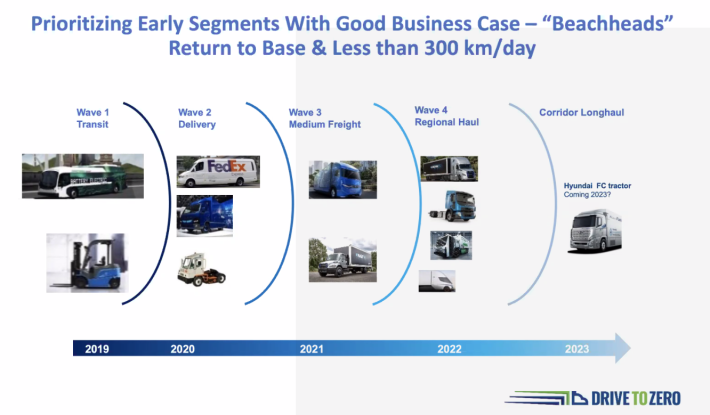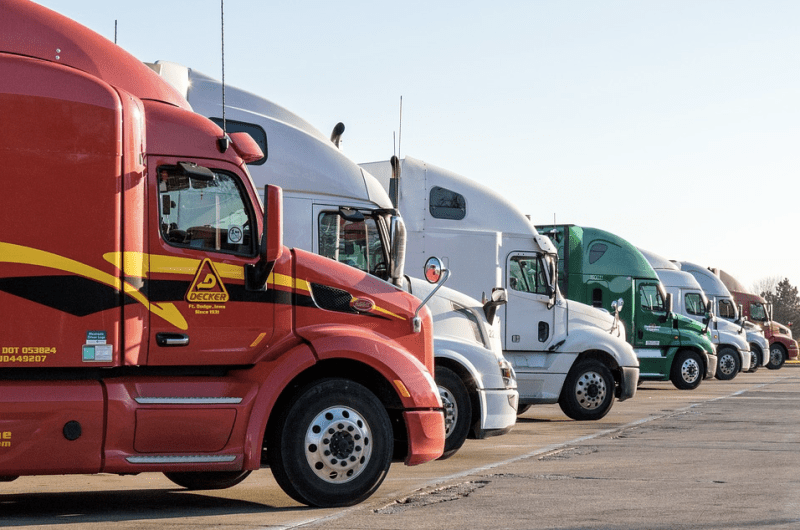California is full of "diesel death zones" focused on port-adjacent, historically Black and brown communities, explained Raj Dhillon of the public advocacy group Breathe Southern California. This is because of the abundance of diesel trucks, ships and locomotives around ports and oil refineries, spewing carcinogenic agents and smog-causing gases.
The question is, can new technologies turn these same areas into "electric life zones" in a transformed economy where polluting, greenhouse gas producing fuels are phased out and new, cleaner fuels are transitioned in, asked SPUR's Nick Josefowitz, as part of a Thursday morning panel discussion held jointly by SPUR and Move California. The ten panelists, who represented the state's major regulatory, clean tech and clean air advocacy groups, discussed if a multi-billion statewide measure they hope to put on the 2022 ballot can make this change possible.
But how does the state strike a balance between pursing "cleaner" fuels, such as natural gas that is preferable to diesel but still emits carbon, versus chasing technology that may not be mature for many more years, such as full-electric, battery powered trucks? Whatever the answer, regulators stressed that emissions from transportation, more than any other sector, are the source of the state's pollution.

"If we don’t fix transportation, we won’t hit ANY of those goals," explained Rajinder Sahota of the California Air Resources Board. She said solutions have to come with a combination of technology and behavioral changes that reduce vehicle miles driven.
Move LA's Denny Zane, who co-hosted the panel, asked how the state could make use of a proposed $30 billion measure to help push in that direction. She replied that there must be investment in public transit and in subsidies to spur a bigger electric car and truck market. "We have to come out of the pandemic and 'build back better,' as the Biden Administration puts it. We have to invest in ways that support where we want to go, not where we were before the pandemic."
That will be helped along by the governor's mandate to phase out new fossil fuel cars by 2035. But it won't be enough on its own, said the panelists. Money is needed to develop a self-sustaining low or zero emissions car and truck market, and the fuel or charging infrastructure it requires. "
The goal is to build a sustainable market, starting with larger investments today and going to smaller or no investment in the future," explained Steve Cliff, also with the California Air Resources Board. The panelists argued that if California pushes forward with eliminating petroleum-based fuels, other states will have no choice but to follow. The idea is that if car and truck companies can only sell zero-emissions vehicles in California, it becomes more economical to sell them in other states, rather than maintain separate production lines. "People look to California as the gold standard on clean tech, air quality… if California, leads, people follow," added Sahota.
But should cars and trucks of the future be powered by hydrogen, batteries, fuel cells, or combustion engines using "renewable" natural gas (RNG)? That's where things get complicated, since every source of fuel and power has advantages and disadvantages in range, power, speed of refueling and the speed at which companies and truck drivers can recoup their upfront investments in the new machines.

"Different industries have different needs," explained Kevin Maggay with Southern California Gas. "If you want to disrupt transportation and turn over diesel, the best way to do it is to give people more options." Maggay was bullish on RNG, because it harvests and helps reduce waste methane from dairies, landfills and wastewater treatment plants; methane is a potent greenhouse gases. Maggay and Todd Campbell of Clean Energy advocated for fueling long-haul trucks with hydrogen derived from RNG because trucks can be refueled in minutes, just as they can from diesel.
For transporting people, panelists suggested true-and-tried solutions such as better land-use planning. "Cycling is the cleanest form of transportation," said Henry Hilken of the Bay Area Air Quality Management District, who argued that incentives should focus on better zoned communities that encourage people to walk and bike. "Whether it's e-bikes or good old fashioned regular bikes, funding bike routes and facilities are critical."
That makes sense, of course, but from Streetsblog view it seemed odd that during the freight conversation "change" was defined only as finding new tech to power trucks. Diverting freight from trucks to electrified rail doesn't require any new tech, but it wasn't even mentioned by the officials on the panel. Perhaps before asking voters to approve a tax measure to fund technological developments that promise to improve air quality, the state and its counties should invest in switching to existing technology that already does that overseas. It should also stop spending on ongoing freeway expansions that are actively making air pollution worse.
For more events like these, visit SPUR’s events page.






